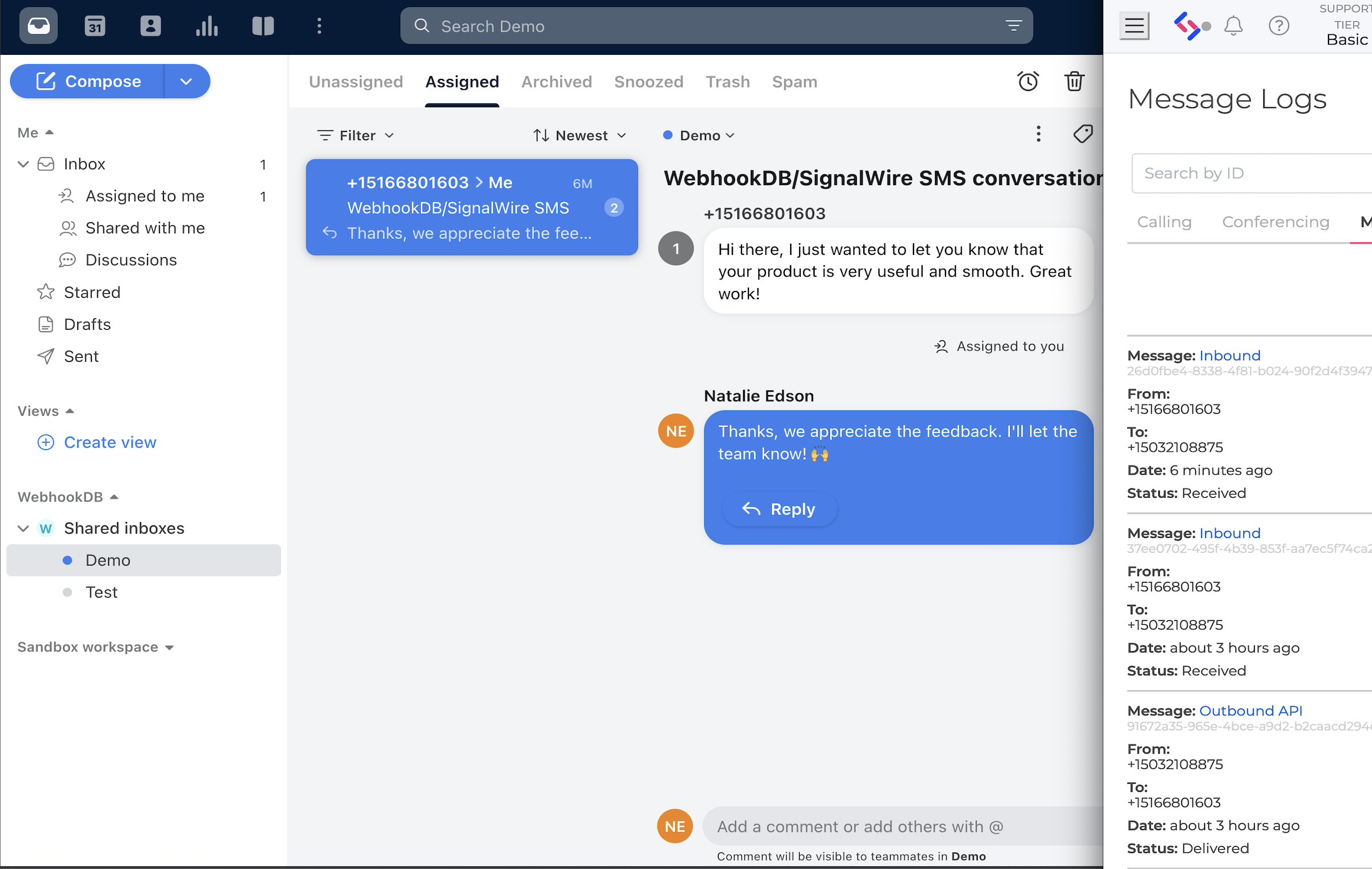Front/SignalWire Channel
Create a WebhookDB/SignalWire SMS channel in Front to manage your SMS messages alongside all your other channels. Instant, two-way sync with SignalWire means that you can send, receive, and reply to SMS messages directly from Front.

This channel only takes a couple minutes to set up:
- Go to https://webhookdb.com/terminal and sign up or log in.
- Run
webhookdb auth loginand follow the prompts.
- Run
- Create a Signalwire Message integration, so your SignalWire SMS will sync into your WebhookDB replication table.
- Run
webhookdb integrations create signalwire_message_v1and follow the prompts.
- Run
- Create the Front/SignalWire Channel.
- Run
webhookdb integrations create front_signalwire_message_channel_app_v1and follow the prompts. - You will get an API token at the end (starting with
sk), which you’ll need to input into Front.
- Run
- Finally, add the Front Channel.
- In Front, to to Settings -> Company -> Channels -> Connect a Channel
- Find the ‘WebhookDB/SignalWire’ channel, and press Connect
- For ‘Name’, use what you like.
- For ‘Token’, use the token from the previous step.
- Finish the channel setup (choose an inbox, etc).
Whenever you send a message via Front, it will be sent via SignalWire within a few seconds. Whenever an SMS comes in through SignalWire, it will be imported into Front within 60 seconds.
Changing the SignalWire Phone Number
Run webhookdb integration reset front_signalwire_message_channel_app_v1. You will be prompted for the new phone number.
Note that the last 2 days of inbound messages to this phone number will be automatically synced into Front.
Rolling the API Key
Run webhookdb integration roll-key front_signalwire_message_channel_app_v1. The old API key will be replaced with a new key.
You must copy the new key and update your Channel settings in Front.
More information
If you want to replicate your Front data into an SQL database, you can use our main WebhookDB integration. Install it on the Front App Store.
Check out our guide to add additional APIs, and to sync data to your data warehouse or your own application backend.